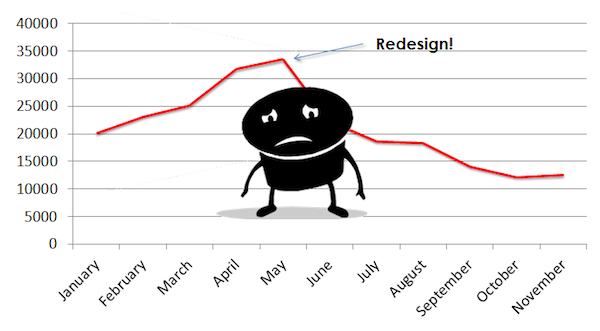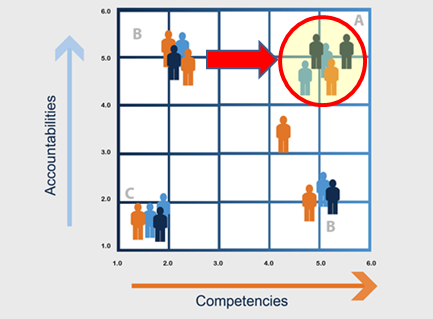Reeling Them In! How to make your Website Work Harder For You
Tags:
Previously seen as an afterthought, more companies are seeing the value to be had in actively improving their website.
Is your company’s internet presence going unnoticed? This might be because what you thought was the hard part, has only just begun. These days it’s not enough just to simply have a website to bring in visitors, you have to actively make it an attractive destination for consumers who are surfing the web. The Internet can play an important role in marketing your business, however you have to know how to make it work for you.
Your online presence can be seen in two phases. The first is successfully bringing people to your page, while the second is keeping them there long enough for your message to have been communicated. The following are some tips that can both increase the traffic that is coming to your site and encourage people to continue looking once they have arrived.
Reeling them in
Events on the Internet happen in the blink of an eye. This means that you need to keep your website fresh and up to date if you want to see it coming to the top of the Google and Bing searches. Strategies like maintaining a blog or a current news feed are easy ways in which to keep the content on your website fresh and give people new reasons to visit your site.
Having said that, it is important to keep the content you publish meaningful. If you are simply posting the same thing using slightly different terminology, not only are you compromising the quality of your website, you are not doing meaningful work to improve your website’s search engine optimization, as search algorithms can decipher deliberate attempts to put as many keywords on your website as possible. But if you truly believe the work that you do is important and can offer invaluable service to your customers, content should be able to flow with a little bit of insight.
Keeping visitors engaged
So you having given them a reason to visit, the challenge is being a good host and giving your guests a reason to stay. Inc. Magazine explains that websites can be viewed in a sense like newspapers. In the “olden days†of hardcopy newspapers, the attention grabbing news stories would be listed “above the fold,†meaning they would be the first thing that a reader saw so as to draw them into the paper. This concept can be applied to your website as well, by making the most attention grabbing and attractive pieces of content the easiest to access. It is only so much to have a great piece of content – you have to put it in a place that makes visitors want to see it.
Software can now point out where the highest and lowest amounts of traffic on your website are arriving, and in doing so, see what sections are receiving the most action. If you notice that a particular page is not being visited nearly as much as others others, you may want to consider where its short comings lie. It could simply be that it is in a difficult to reach spot or it could be that people are not interested in the information it has to offer. This should prompt you to evaluate what it is this particular page is doing for your site. If you feel that information is important for your visitors, it should be put in an easier to access location, but if you feel like it might be extraneous, it probably is.
A website is all about giving potential customers a reason to visit and a reason to stay. What forms of content have you used to accomplish these goals?
Article by by Chelsea Segal Intro by DealerNet Services
Your Copywriter Don't Dance and Your Content Don't Rock 'n' Roll [PODCAST] Shake it up Baby!
Tags: If you haven't heard this it's great. If you have it's worth another listen
If you haven't heard this it's great. If you have it's worth another listen
“The Point – In Your Ear†is back sneering at crappy content like the king of rock and roll. In this wild tale, you’ll hear about a street corner advertising rock star, the ho-hum state of online content, the point of view of advertising legend Tom McElligot, how content is too much like merlot, and why you need to step on some blue suede shoes.
It’ll all make sense 9 minutes from now. Enjoy.
Follow this link:Â Podcast
The story begins...
A street corner advertising rock star.
Her job is to generate traffic to the Verizon Wireless store. She has no props. Nor does she hawk an offer you haven't seen a million times. Sounds, pretty ho-hum, I know. But day after day, she's doing her thing on the well-traveled corner of Green Valley and Francisco and she calls a ton of attention to herself and the store. I bet she actually does generate traffic. And I'd bet you an hour wages, she's paid several shillings more than minimum wage. Why?
She dances. Enthusiastically. Oddly, actually. Relentlessly. She has an iPod in her pocket, earbuds in her ears, music in her heart, and she never stops dancing. And believe me, she doesn't dress like or move like a Dallas Cowboys cheerleader. And if you're wondering if she'd cut it on "So You Think You Can Dance," the answer is no chance.
She doesn't bring amazing talent to her extremely unusual profession. She brings originality and passion.
Let's talk about online marketing now.
Listen to the podcast now
http://dealernetservicesonline.biz
Â
 Planning a website redesign can be an extremely exciting process. You have a blank canvas to which you can easily add your own creativity and flair. It's tempting to get carried away.
Planning a website redesign can be an extremely exciting process. You have a blank canvas to which you can easily add your own creativity and flair. It's tempting to get carried away.
Unfortunately, most designers and creative teams will use this opportunity to focus entirely on the visual design of the site, and overlook SEO, content, and functionality.
Sites with a history of good search traffic can see most or even all of that traffic vanish after a redesign. That new site may look great, but that won't be much consolation to their owners!
Yes, it's important to have a great looking website. It needs to look great if it's going to convert your visitors into paying customers, but traffic, conversions, and functionality are what will ultimately govern its success or failure.
So, what are the key considerations when implementing a site re-design?
1. Have You Done Your Research?
To design a website that's going to deliver results, you need to know who you're targeting. The design, functionality, and SEO focus should all be dictated by informed research. That means market research, keyword research, and community mapping.
This should be your first port of call, not an afterthought. If you have this information from the very beginning you can then use in in every aspect of your redesign.
Benchmarking your existing data will allow you to identify what is currently working, and what has worked in the past. Be sure to evaluate which pages are the most popular, convert the best, rank and deliver the most leads/sales. Doing so will fuel the new site with proven techniques and allow you to gauge the site's success post-launch.
2. Website Structure
A redesign isn't simply a chance to give your website a fresh look. It also gives you the opportunity to reorganize the way your site is structured.
To make sure your information architecture is set up for optimal visibility and conversions, your priority should be analyzing the effectiveness of your current site:
- Which pages convert the best?Â
- What's the most common route through your website?Â
- Do some pages have a high bounce rate?
Use all of this information to improve the architecture of your new site.
Mobile phones, tablets and alternative devices must also be considered. There are a few primary approaches:
- Responsive
- Adaptive
- Mobile site
- Apps
Each approach has their advantages. You'll want to consider factors like site goals, personalization, site complexity, timeframe, and budgets.
3. Redirects – 301 & Canonicals
Inventory all pages, incoming links, and pages that rank well from the very beginning. Don't forget about subdomains.
As the URL structure is changed, a redirect strategy will be incredibly important to retaining any SEO rankings and rerouting referral traffic to the new pages/URLs.
Audit and analyze where all incoming links are coming from, and going to. This can be done using tools like Open Site Explorer and Majestic SEO, among others.
Once you have an inventory of backward links, you'll want to map them along with all pages to their new location using 301 redirects. This is also a great time to establish your canonical strategy for "www", index files, and other forms of duplicate content.
Tip: The redirect strategy will likely change based on design, navigation, and content, among other factors. Knowing this in advance will help alleviate future frustrations.
4. Navigation
How easily your site can be navigated, by both human visitors and search engine spiders, will have a significant effect on the visibility and success of your new website. You need to look at site structure from two different standpoints:
-
How are people going to find your site? This is where you need to be thinking about your URL structure. Can it be shortened? Are there lots of unnecessary characters? Does the URL give pride of place to the term you'd most like that page to rank well for?
A redesign gives you the chance to give your entire URL structure a reshuffle and cut away any dead wood that may have developed as part of your existing site's development. Your new URL structure and sitemap should make it easy for the search engines to see what each page is about and make sure that you're using the most important terms for each of your campaigns. -
How your human visitors will navigate the site once they've found it? Which pages have you identified as your primary entry points? What action do you want visitors to each of these pages to take? What journey will they need to take in order to take that desired action? Can you do anything to shorten this journey or increase conversions?
By taking an informed, data-driven look at your existing site structure and optimizing it in line with your new site's primary objectives, you have a chance to drastically improve the performance of your site.
5. Where Does the Content Fit In?
We all know that content is the most important aspect of any digital campaign. So why is it still so often an afterthought when sites are designed?
The quality, visibility, and relevance of your content will be the most influential factor in determining the success or failure of your new site. Shouldn't it be given some attention during the design process?
One primary consideration is what type of content will be published on-site.
- Are you going to have a blog?Â
- Is that blog going to be mostly visual or will you be publishing long, informative articles?
These questions should always be answered before you start designing the site. This gives you the opportunity to effectively integrate the blog into the overall design of your new website. It will also give you a chance to make sure that visitors can always find the most relevant content for them – and that they can find your blog, no matter what page they're on.
Another consideration is whether you'll be offering any other content through your site.
- Will you be publishing whitepapers, eBooks, video tutorials?Â
- If so, how will they be delivered?Â
- Will you offer them in return for an email address?Â
- Will they be available to anyone, or only available to members?
As with each of the previous points, considering your content before you finalize the site design will make it far more functional, profitable, and effective.
6. Technical SEO
Your site's position in the SERPs depends on many different factors (more than 200, according to Google). This means that your redesign gives you more than 200 different areas that you can look to improve, condense, and build on to increase your search visibility, site authority, and trust.
Three key areas you should pay close attention to during the redesign process are:
- Page load times: Far too often companies launch a site that looks great, but only if you wait around for long enough for the homepage to load. Unfortunately, visitors to your site won't put up with it, and as a result, neither will the search engines. Your redesign should be seen as an opportunity to speed up your site, not slow it down.
- Compliance: This area is also often overlooked by site designers. If you want your site to work in the modern online marketplace it needs to conform to recognized standards. This means it needs to adhere to section 508 and W3C compliance factors as well as EU Cookie laws (if applicable).
- Coding: Your site redesign should be seen as an opportunity to give your code a spring-clean. As you know, search engine spiders can only read text. Images, videos and other web elements can all hide and disguise this text so that search engines have difficulty reading it. This means that they are also very unlikely to give your pages high visibility for those disguised terms. To ensure that your site has the greatest possible search visibility, you need to make sure that your code makes it as easy as possible for the spiders to crawl your site. If you're in any doubt, use a tool like this to see your pages from a search engines point of view.
7. Testing
In an ideal situation, budgets and time would be unlimited. If we had the budget and time, every single component of the site would be pitted in a death match fight to the death based on analytical data. This would include all wireframes, mock-ups, images, color, content and the list goes on.
Obviously, we can't do this. But don't forget about the advantages gained if we could, and remember to incorporate testing into your process.
Conclusion
Digital marketing is quickly evolving into an entirely integrated discipline. A website redesign is a major event in any digital marketing campaign, so it makes sense that this process should also be as integrated as possible.
If a site is going to deliver real value, it shouldn't be left to just designers and aesthetic considerations. Your SEO team, copywriters, sales team and social media managers should all be heavily involved, right from the start.
By Brad Miller
http://dealernetservicesonline.biz
 Marketing has been democratised.
Marketing has been democratised.
The capability to use marketing tools and technology without having to beg or pay for attention is unprecedented. It’s a time where you can now build your own crowd to market and sell to without paying the mass media gate keepers.That’s social media.
The social media networks are at your disposal and with the right tactics and software you can create brand awareness and access to influencers and decision makers in boardrooms across the world.
This freedom to take control of your own marketing comes at a cost. The cost is complexity and time. To be effective it requires using multiple networks, constant content creation and monitoring and managing.
It’s not just multiple networks and multimedia to think of, it is also about adapting to new hardware platforms where consumers receive their messaging. This is no longer restricted to just print, TV and radio but has proliferated to laptops, smart phones and tablets. They all have their own limitations and parameters to be optimal.
Within this technology and media explosion there are many marketing trends that have been emerging that we should be paying attention to.
7 Marketing Trends
Here are seven trends that all marketers need to consider in their toolbox of tactics to remain effective and current.
1. Content marketing
The importance and role of content marketing and how it works across social media, search, multimedia and mobile is becoming a key focus for many brands. Many companies don’t understand the importance of this trend and how it underlies almost all digital marketing. Brands such as Coca Cola have recognised this and changed their strategies to meet the web realities.
Brands have been blinded by the shiny new toy of social media eg Facebook and think that Facebook marketing is all they should be doing beyond their day to day habitual marketing that they have been doing for decades.
This is just a snippet of your activity focus. You should not be forgetting Twitter, Blogs and Google+…just to mention a few to market your content.
Content is the foundation of all digital marketing and is the reason people read, view or share.
Creating “liquid content†is vital to create brand awareness and tap into crowd sourced marketing.
2. Mobile Marketing
The rapid rise of smart phones and tablets has flatfooted many marketing managers and delivering marketing messages and content that is optimized for mobile platforms is becoming a “mustâ€. Increasingly consumers are viewing content, receiving emails and buying products from “small screensâ€.
Companies need to urgently redesign websites and blogs that are “responsive†(respond to all devices screen sizes for optimal viewing and usability) to ensure they are optimising for mobile devices. Some websites are recording 30-40% of all traffic from mobile devices. That should not be ignored. It will cost you money and lead to missed opportunities.
3. Integrated Digital Marketing
Companies that are savvy marketers are realizing that digital marketing should not be one offs that are islands of isolated tactics. Social media and content is impacting search results. Google created Google+ for a few reasons including capturing social signals. Ensuring that your approach is allowing you to tie them all together to achieve maximum effectiveness is becoming key.
This is optimised and integrated digital marketing.
4. Social Media at Scale Marketing
Brands are also realizing that “doing†social is complex and is like juggling many balls at once. We are seeing the rush to develop, buy up start-ups and implement Enterprise platforms that are assisting marketing professionals to market, manage and monitor multiple social networks and even other digital marketing (eg email).
The tools to manage the complexity are emerging and evolving as the rush to package the technology accelerates. The holy grail to have one tool to manage your marketing is the mission for many software companies who see this opportunity.
This is “social at scaleâ€
5. Continuous Marketing
Marketers need to realise that a strong trend is emerging called continuous marketing. It doesn’t mean that you shouldn’t run “campaignsâ€. The reality is that being found online (found in social network updates, Twitter streams and in a Google search) requires constant SEO activity and content creation, publishing and marketing.
Google hates silence.
Creating, curating and marketing content that is fed into the maws of the social media beast needs to be relentless or you will left behind and you will be lost in the web noise.
To do this well requires implementing marketing automation that leverages your time and resources.
6. Personalized Marketing
The “one size fits all†approach to marketing where mass messages on television and traditional media are becoming less effective due to media saturation. We are seeing the rise of personalized marketing on e-commerce sites, websites and emails that tailor the advertising and user interface to the relevant interests of consumers.
Visit an online store once and come back and the website knows that you are male and like Nike runners. The next email that arrives has also been personalised with products that you visited while shopping online. The web is capturing your habits as it reads the data, applies intelligence and serves up information that is relevant to “youâ€.
This trend is being driven by technology using “big data†to increase marketing effectiveness.
7. Visual Marketing
We first saw the creep of visual marketing into the landscape when YouTube entered mainstream consciousness a few years ago. Since then this creep has turned into a torrent of visual marketing with emergence of Pinterest, Instagram and even Slideshare.
In the last 6 months this has gone to a whole new level as Vine’s 6 second snack size video and now Instagram’s new 15 second video app has marketers scrambling for creative inspiration to apply and leverage this new trend.
Your marketing needs to ride this trend to increase engagement and cut through the online noise.
What about you?
Which trends excite you or even surprise you? Have you adapted your tactics to meet the continual marketing and technology eveolution.
Look forward to hearing your stories, feedback and insights in the comments below.
Written by Jeff BullasÂ
http://dealernetservicesonline.biz
Â
90% Of Customers Will Recommend Brands After Social Media Interactions
Tags: A new study conducted by the Internet Advertising Bureau has found that 90 per cent of consumers would recommend a brand to others after interacting with them on social media.
A new study conducted by the Internet Advertising Bureau has found that 90 per cent of consumers would recommend a brand to others after interacting with them on social media.
The study focused on FMCG brands Heinz, Kettle and Twinings and found that social media can drive by driving brand sentiment, encouraging consumer engagement and increasing brand loyalty.
More than 4,500 survey responses were collected from each brands social media pages over a two month period and supplemented by 800 interviews to inform the findings.
This showed that four out of five consumers would be more inclined to buy a brand more after being exposed to their social media, with 83 per cent happy to trial the product in such circumstances.
The uplift in sentiment for each brand was measured as Heinz 22%, Kettle 17% and Twinings 19 per cent, allowing the IAB to estimate that for every £1 spent on social media as much as £3.34 could be generated.
Kristin Brewe, the IAB’s director of marketing & communications said: “The IAB study shows that, when trying to create deeper emotional connections with consumers, social media is an essential channel for brands. This isn’t surprising since social media is the only channel where it’s possible for brands and consumers to have meaningful two-way conversations, making the strength of connections that much stronger.â€
Ian Ralph, the director at marketing sciences who conducted the research, adds, “Our research shows that to create an emotional connection brands really need to provide clear, timely and, most important of all, relevant content that develop a conversation. Interestingly, we also found that brands really shouldn’t be afraid about having their products on show and of linking up their social media activities to their business objectives. Social media has the potential to turn brand customers into brand fans.
“By making people love, not just like your brand, you’re more likely to drive future purchases and increase sales.â€
 By JOHN GLENDAY, THE DRUM
http://dealernetservicesonline.biz
Â
Sponsorship May Be Hard to Define, but Marketers Still Invest
Tags:Social sharing is key to online sponsorship
Sponsorship regularly extends beyond digital channels to the entire marketing ecosystem, according to a new eMarketer report, “Online Sponsorship: Defining, Tracking and Measuring an Amorphous Channel.â€Â So for many marketers, sponsorship is a multichannel game, where the activity in one channel supports and leads to another.
Sponsorship can be difficult to define with a single label. It can mean logo placements, banners and pre-roll video ads—or it can mean streaming concerts, brand-created articles, along with sponsored events and webinars.
The prevalence of sponsorship marketing is huge. In a February 2012 study from the Columbia Business School and New York American Marketing Association (NYAMA), 90% of US marketers said they included sponsorships and events as one of their marketing tactics.
According to research from GroupM, sponsorship spending, at $19.2 billion, will comprise 14% of total marketing spending in North America in 2013.
IEG, a sponsorship consultant, came in roughly in line with GroupM, estimating that North American sponsorship spending this year will be about $19.9 billion. Most of those sponsorship dollars will go to sports, at a 69% share of that market. In contrast, entertainment sponsorship will represent only a 10% share.

Social has become a key element of sponsorship. “We can’t do a partnership right now without someone asking for some sort of social extension,†said Dan Rossomondo, senior vice president of global marketing partnerships for the National Basketball Association. According to IEG and Performance Research, 88% of companies worldwide used social media as a channel for leveraging sponsorships in March 2013.

Digital interactivity works as an excellent support for a brand’s more static sponsorship methods offline. Therefore, digital sponsorship increasingly depends on cross-channel elements.
“What used to be clearly identified as sponsorships, with discrete budgets and contracts, are now far more likely to be part of multiplatform, cross-channel programs in which a partnership is just one element, and where multiple players have a role in planning, execution and evaluation,†IEG’s “Sponsorship Outlook†reported in January 2013.
Just as some of sponsorship’s formats and several of its elements are evolving, so are the ways in which marketers measure its effectiveness—but to a lesser extent.
In the IEG/Performance Research survey, the most cited metrics for evaluating sponsorships were sponsorship awareness (94%) and brand awareness (90%).

However, a UK study from Think!Sponsorship found that nearly everyone (93.5%) said that the information they need to evaluate sponsorship evolves over the course of any campaign. In addition, 70.9% of respondents said the sponsorship industry has become over-dependent on measuring brand awareness.
“I had all the wrong metrics before,†said Ron Faris, head of brand marketing at Virgin Mobile. “And the metrics before were impressions served. And all that stuff is just crap. The metric that I’m married to right now is all about the share. I also think the number of retweets and earned impressions are also really important. But I’m not going to bank on a lot of clickthroughs of views of my content.â€
The social metrics—shares and followers—tell Faris how often he can message the people he’s retargeted and how big he can make that retargeting pool.
The full report, “Online Sponsorship: Defining, Tracking and Measuring an Amorphous Channel,†also answers these key questions:Â
- What types of sponsorship are available to companies today?
- How do sponsorship spending estimates help describe this universe?
- What elements contribute to the evolution of sponsorship?
- What are the best ways to measure sponsorship’s results?
Â
This report is available to eMarketer corporate subscription clients only. eMarketer clients, log in and view the report now.
 Interesting things happening across the pond.
Interesting things happening across the pond.
Dealers and manufacturers will soon be given the tool to update, track and measure the effectiveness of finance offers on new cars in a much simpler and cheaper way than has traditionally been available.
CAP is working on a near-automated system that it says will, in quarter four this year, spell the end to what it calls the “primitive†communication process for pricing and other incentive information by moving all the information into a single secure web-based service.
Independent research by Accenture has shown that new vehicle incentives are a manufacturer’s second largest cost after raw materials and dwarfing product development budgets, warranty provision and assembly costs.
The average investment in incentives per unit sold over the lifetime of a vehicle is £2,000.
But it is estimated that £40 million of additional revenue is currently generated over the lifecycle of a typical model using financial offers.
The new product will be called ‘CAP new vehicle incentive’. It will be an additional information stream to CAP new vehicle data.
Nigel Pates, product manager and former managing director of showroom systems' supplier WinWinWorld, said: “Communication of the incentive information to dealers is typically paper-based, time-consuming, error prone, inefficient and – worst of all – completely opaque. With some brands, any given car could be subject to around 12 incentives at one time and a sales manager will be juggling with these each time they talk to a customer. This is time consuming and liable to error.
“It is also therefore very difficult to analyse performance of incentives and hard to even maintain 100% accuracy at all times.â€
CAP NVI, he said, will enable dealers to:
* Take vehicle offers to market faster via, for example new car configurators and point of sale marketing material
* Reduce labour costs and time spent by showroom staff learning and updating the latest incentive terms
* Eradicate errors through each incentive being linked by model by the unique identifier the CAP code
* Administer agreements with customers correctly each time
* Eliminate profit loss due to claim error
* End the need for rebate claim negotiations
* Understand which incentives are optional or mandatory
* Free up staff currently tied up administering incentive information.
Subscription costs to the system for dealers will be based on a sliding scale up to £590 a year, dependent on their existing data supply contract with CAP.
Manufacturers paying to access NVI will only be able to see data on their incentives, dealers on only the brands they offer.
Pates said: “CAP NVI will unlock millions of pounds of additional profit opportunity for manufacturers, drive out costs and eliminate errors.
“For the first time they will be able to monitor the impact of incentives, respond quickly to changes in the market, get more profit out of each model by managing lifecycle decay more effectively with incentives and gain instant clarity on dealer sales activity and incentives agreed per vehicle.â€
> More details at www.cap.co.uk/products-and-services/new-vehicle-incentives.
http://dealenetservicesonline.biz
Â
There’s no denying that in sales, talent is a key differentiator. The same goes for pro athletes. The majority of your “A†players are talented. They hold themselves accountable and have the competencies required for success.  However, even the most talented will fail if they're put in the wrong environment. Even the best NFL quarterbacks. Today’s post is about how Sales Ops can create conditions that enable success.
How well have you created conditions for sales success? Find out by downloading the Sales Performance Conditions Scorecard here.
Ultimately, sales success is about making the number. Many variables influence making your revenue goals. Overall strategy, go-to-market model and product suite are essential. So too are having the right talent, structure and head count.
However, without setting up the right performance conditions, revenue goals won’t be met. Specific performance conditions include:
- Sales Process: This is your playbook. Is it aligned with the buyer, adopted in the field and reinforced by your “coaches�
- Territories: The field of play. Are territories designed to maximize growth balanced with efficiency? Are you holding back performance based on territory design and assignment?
- Compensation: Akin to a pro athlete’s salary. Is it competitive and geared to keep your very best? Is it synced with your strategy and driving desired behavior?
- Quotas: Your most important player statistic. Are your quotas attainable and reflective of current performance and market potential?
I’ll illustrate the importance of these conditions using a sports analogy with the NFL.
Aaron Rodgers is a quarterback with the Green Bay Packers. He’s considered by many to be one of the best NFL quarterbacks playing today.  The Packers are also one of the greatest NFL franchises ever.  With the right game plan, coaches, supporting team, trainers and equipment he’ll remain elite.
Huddle Around A Sales Process
What if Rodgers’ receivers and running backs all decide not to follow a scripted play? That’s like having sales reps create their own sales process. Without a huddle and playbook, you get no predictable activity, cadence or alignment. Without a sales process, some of your “A’s†may improvise. However, to raise performance broadly, you need an adopted and repeatable process.
Give Your “A†Players the Best “Fieldâ€
Great quarterbacks use the entire football field. However, their real “patch†– where they maneuver the most - is the backfield. How would Rodgers perform if his “patch†was much worse than competing quarterbacks? If his backfield was filled with gopher holes and boulders, he would fail. Give your very best reps the very worst sales territories and suffer the consequences.
Design territories that are efficient and take untapped opportunity into account. To do this right you have to conduct account segmentation. Update the analysis annually and make adjustments. Assign the highest potential territories to your best reps. They will thank you for it and perform.
Competitive Compensation Aligned to Strategy
Rodgers’ current total pay will average about $19 million per year. Among the highest paid QB’s in the NFL. Consider if Green Bay had a pay policy that capped him at $5 million. Still a good chunk of change but he would opt out. He would get paid more by the competition.Â
If your compensation plans aren’t in line with your competition, you lose talent. Don’t kid yourself – great sales people are like “free agentsâ€. They expect to get paid what they’re worth. Benchmark the market regularly to see if you’re competitive. Reward strong performance.
Incentive pay is a lever that must align with strategy.  Suppose Rodgers was paid an incentive every time he threw an interception. Crazy, right? Well, no different than paying incentives misaligned with your core strategy.  Pay sales well for results that reinforce the strategy of the company. Align the two or you won’t get the desired behavior.
Realistic Quota Setting
Here’s one last parallel to consider regarding quota setting. Assume Rodgers was told to double his pass completions this year to make his incentive. In addition, if Green Bay traded all their best receivers, would Rodgers make his “quota� It would be totally unrealistic to expect him to double his performance. Quotas must be attainable. To set them appropriately requires looking at past performance and opportunity potential.
Setting the right performance conditions for your team is complex. It requires your foresight, analysis and execution. You need support from executive management. It demands a team approach. It’s much more than just making analogies to NFL football. How well have you created the best conditions for sales success? Use our Sales Performance Conditions Scorecard to begin your evaluation.
It’s not too early to start now in preparation for 2014. You could wait but you run the risk of losing your “A†players. You’ll miss the number. Success begins with setting the right performance conditions. Move the ball downfield.
Headlines That I Hate: 5 Ways To Ensure I’ll Never Read Your Blog Post
Tags: You should know up front that this is not about writing a bad headline and how to fix it. There is plenty of great advice out there to help you make sure your content gets read and doesn’t end up on the Island of Misfit Posts.
You should know up front that this is not about writing a bad headline and how to fix it. There is plenty of great advice out there to help you make sure your content gets read and doesn’t end up on the Island of Misfit Posts.
This is about writing a bad headline… for me.
Why should you care?
Because I’m not alone. Lots of people I know share these same pet peeves and they aren’t reading your blog posts, either.
And the thing is, we could be missing out on some great content. You may have poured your heart and soul into it but you’re wrapping it with spit and duct tape and that just isn’t appealing.
So here are some silly, trite, tired approaches to headlines that you may want to consider wiping from your repertoire. It just might mean the difference between an eye-rolling click of the delete button and an extra reader who happily clicks the tweet button.
1. “X Is The New Yâ€
You see these in confounding numbers.
Customer Experience is the New Marketing (It’s not. Read this post from Jeannie Walters at 360 Connext for a great opinion on the matter.)
Social is the New Search
Also not. Social is social and search is search even if they are now intrinsically bound.
How about just telling me what something is instead of what it’s (allegedly) replacing? There is room for more than one thing in the world and in spite of how clever it sounds to be discovering some new paradigm, most things can still be traced back to the same fundamental principles of marketing.
The reason I don’t like this is because it implies that we should be rethinking our methods or tactics or perhaps even our entire marketing plans in light of “the next greatest thingâ€. It creates a false sense of urgency about something we should be doing. It has “I am a trend†written all over it and that can easily morph into “I am the next shiny thing. Look fast or get left behind!â€
How about this instead… slow down. Stop riding trends and figure out how to adapt your tactics and turn change into opportunity. Tell me about your success with that and I’ll be sure to read.
2. “Z Is Deadâ€
More things have died this year than I can count… search, email, television as we know it.
A close cousin of this headline is in question format: Is Z Dead?
The answer to that is pretty much across the board… nope.
Facebook is not dead or dying. Heck, even MySpace managed not to die, in spite of our best efforts at slaughtering it via headline.
RSS is doing just fine without Google Reader (if you want to say that Google Reader is dead, go ahead. I’ll give you that much. But it still doesn’t make for an interesting headline.)
Nothing from Twitter to PCs are dead or dying.
I don’t like these headlines because they purport to be prophetic and end up being some lame regurgitation of a questionable statistic reported in someone’s ten-person “studyâ€.
Here’s when something is dead: when it’s dead… for you. If email marketing is a waste of your time and you have experimented and tested and gotten zero results then call it and move on. Otherwise, forget what some guru somewhere has decided works and doesn’t work.
Even if you’re the last one standing on earth using a particular tactic – and it’s working for you – who cares if it’s dead or even undead?
3. “I’m In Loveâ€
With a man? A cool app? Your new shoes?
Vague headlines that say absolutely nothing about the content of your post are a guaranteed way to ensure that neither I – nor most busy people – will click to read more.
I’ll admit it… sometimes I read posts even if they have the crummy headlines I just mentioned above. Usually because I’m looking for a fight, but still… ya got me.
But this one? Never.
These kinds of headlines say one of two things: I’m too lazy to come up with something better or I’m too self-absorbed to imagine why people wouldn’t be absolutely fascinated by my every word.
Does that sound harsh? Hey, it could be great content! But I’ll never know. If you’re really in love then woo me… just a little.
4. “Todayâ€
Along with the vague headline, the one-word headline has lazy/narcissistic written all over it.
It’s almost an afterthought… oh yeah, I need a stupid headline. Here, take that!
You’d better have some impressive word up your sleeve if you want to make this even the tiniest but incentivizing. Even if your post is, in fact, about “today†give me a reason to care.
5. “The Secret To Doing ABCâ€
When you write a blog post, do you hide it behind paywalls and passwords? Do you forbid search engines from listing it and do everything in your power to prevent others from finding out about it?
No?
Then it’s not a secret.
I know this is a gimmick. A lot of people know this is a gimmick. It sounds very important but usually it ends up being the same advice I’ve read on a hundred blogs in a hundred different ways.
Beyond gimmickry, I dislike these headlines because they imply there is just one right way. The right way. And we all know there is no such thing.
So be honest: when was the last time you read (or wrote) about a “secret†that was truly new and heretofore undiscovered?
Then be honest in your headlines. Just tell me you’ve got a great idea for promoting my website. Not “the†secret.
Bonus: D Is A Scam
I called this a bonus because it’s a little different than the rest.
If you tell me something is a scam, you can bet your booties I’ll be clicking and reading!
But here’s what you’d better not do once I get there: bait and switch.
You know what I mean. There’s a headline that shouts, “Twitter advertising is a scam!â€
I want to know why! What does that mean? Is there something I should be worried about?
Then you get to the post and what’s the first line? “A lot of people say Twitter advertising is a scam but I don’t agree. Here are six reasons why it’s great.â€
Then how about this for a headline: 6 Reasons Twitter Advertising Is Great
Not only will I click on that but I’ll click on your next headline… and your next one… because I will trust that you’re going to share the information I want to know.
Â
Â
What do you think? Do any of these headline tropes turn you off, or are you still bedazzled by secrets and lured by the vague promises of single words?
Â
Â
Â
Â
Sales & Marketing Effectiveness Blog Prevent ‘A’ Player Turnover
Tags:
This post will explore why all turnover is not created equal. Measuring sales turnover as a percentage can be misleading. A lower percentage isn’t always better.  Yet turnover is probably the most measured sales metric. HR, sales leaders, and Sales o ps all measure it.Â
ps all measure it.Â
Instead of focusing on an overall turnover percentage, focus on retaining ‘A’ players.  Many sales organizations are proud that they have a low turnover metric. But they are retaining the wrong people.Â
Â
Want to retain 100% of your 'A' players? Download the Top 10 Ways to Prevent ‘A’ Player Turnover Checklist. Print it out and put it on your desk.
Â
The first step in preventing 'A' Player turnover is properly identifying 'A' Players. This is not as easy as many think. Here’s an example:
Top Territory Todd:
Todd has exceeded quota the past 5 years. His quota is approximately the same as everyone else. Yet he has 3x the average territory potential in his patch. He has some of the largest current customers. Prospects fall into his lap with little effort. His boss does not want to split his territory. Why mess with a good thing? Todd hasn’t needed to be a student of the game. He has made boatloads of cash and played golf on Friday afternoon for years. Why spend time sharpening the saw? Because of this, Todd isn’t extremely competent on relevant sales skills. Is Todd an 'A' Player? Many would think so based solely on his results. But place him in an equal territory and watch him flounder.Â
Newbie Ned:
Ned has been on your team for 9 months. He impressed everyone during the hiring process. He was diligent during onboarding. His activity is through the roof. He is teaching others of the team new skills he learned in previous roles. Yet, Ned’s results are average for his tenure group. Ned was given the smallest territory and worst customers. Why? His Sales Manager didn’t want to rock the boat. He doesn’t feel Ned knows the product or industry well enough to approach large customers. He is holding Ned back.   Ned walks into the Sales Manager’s office and resigns. The Sales Manager looks at Ned's revenue numbers and doesn’t bat an eye. Once Ned is gone, the Sales Managers labels Ned a ‘bad hire’.Â
What would have happened if Ned was given Todd’s territory? Odds are, his revenue would have skyrocketed. He possesses better hunter competencies and works much harder. In the long run Ned would have significantly out produced Todd. But the Sales Manager was focused on the next 30 days.
The Sales Manager in this scenario missed his number by 4% last year. If he gave Ned a fighting chance he would have hit the number. Backfilling Ned’s territory led to a $1.2 million year-over-year territory revenue deficit. That revenue would have bridged the gap.Â
Â
This is a common issue. So how do you solve it?
- Identify ‘A’ Players - determine your team’s level of competency. Add in performance against accountabilities and plot your team on the 'A' player matrix.
-
Assess whether your performance conditions are conducive to 'A' player success.
- Territory & Quota – do 'A' players have a fair shot to hit their number?
- Leads – are you providing them enough quality leads?
- Is your Go-to-Market Strategy relevant – dated sales channels will frustrate customers. Frustrated customers lead to frustrated A players.
- Reduce non-selling time – admin doesn’t make any sales person money. Minimize it!
- Comp – are 'A' players paid fairly for their efforts?
- Execute the 10 Sales Leadership Ideas in the tool - ‘A’ players won’t settle for an average leader. They need a boss that will remove obstacles, provide candid feedback, and challenge them. ‘A’ players want value from their boss, not noise. Nothing will lead to ‘A’ player turnover faster than poor sales leadership.

http://dealernetservicesonline.biz
CALENDAR
CATEGORIES
TAGS
TWITTER POSTS
CALENDAR
- powered by
- One Big Broadcast
- creative by
- WebStager
© 2025 One Big Broadcast | All rights reserved

